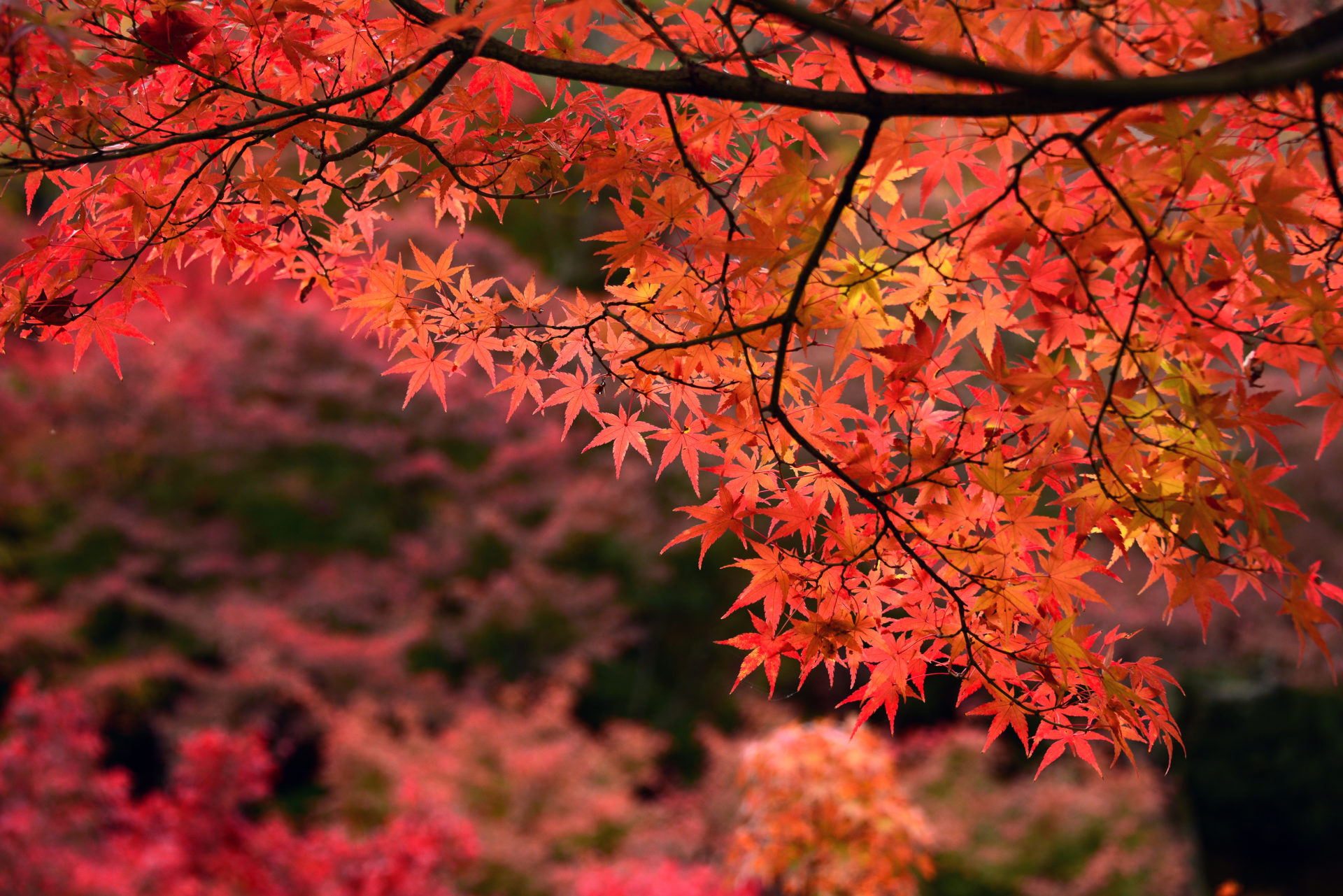
No matter the season, when I am out walking the dog or even driving through an unfamiliar neighborhood, my eye is invariably drawn to those gardens showcasing a Japanese maple. These trees lend an air of grace and serenity to any landscape, provide unparalleled multi-season color, and have a sculptural beauty that is apparent even in the winter. Fall colors vary considerably depending on cultivar and yellows, red-purples, scarlet and bronze hues are all available. There are cultivars that will enhance even the most modest or the grandest garden spaces and they will, in time, become the prized focal point of your landscape. These unique garden gems are simultaneously delicate and bold!
There are three species of Japanese maple but the most iconic one is Acer palmatum which also encompasses Acer palmatum var. dissectum. The other species are Acer japonicum and Acer shirasawanum. Acer is the genus name for maple and the species designation palmatum refers to the multi-lobed leaves whose midribs all radiate from one point. Acer palmatum is generally a small upright tree that grows to 10-25 feet in height. Acer palmatum var. dissectum are also referred to as laceleaf, cutleaf or threadleaf Japanese maple and dissectum references the deeply cut and feathery appearance of the leaves. Var. dissectum is usually a rounded, slow-growing, weeping form that tends to spread outwards, with a maximum height of 12 feet. Most Japanese maples grow slowly at a rate of 1 to 2 feet per year and their fastest growth occurs when they are young. Mature trees typically grow more slowly. No matter their size, Japanese maples are a pleasure to behold and definitely worth the wait to see their spectacular fall color changes and their maturation into a one of a kind organic sculpture.
Japanese maples are generally easy to grow. Autumn is a good time to plant, at least a month before first frost. Spring is also a great time to plant your tree. Choose a spot that gets some shade and is protected from harsh winds. They grow best in moist, well-drained, slightly acidic soil. When planting, dig the hole wider and deeper than the root ball and work compost into the soil to help retain moisture and provide nutrients. Applying mulch after planting will also help with moisture retention. Your tree will need regular watering when young but as it matures, it will become more drought tolerant. As a rule, Japanese maples don’t require regular pruning and their charm stems from allowing them to mature into their own naturally beautiful shape. However, if you need to remove lopsided growth or damaged branches or after several years of growth you feel it would look better if opened up a bit from the center to let more light and air in, some judicious pruning in late summer is fine. Do not prune in the spring when the sap is rising! One last consideration in the northeast is snow- after a heavy, wet snowfall, gently brush away any large accumulation of snow. Ice should be left alone as any attempt to remove it may result in broken branches.
These are a few of the varieties of Japanese maples that Weston Nurseries often carries throughout the growing season:
Acer palmatum
Emperor 1: Small upright cultivar with deep purple-red leaves in spring, turning a vibrant scarlet in fall. When leaves have been shed, the blackish red bark provides winter interest. Buds out later in spring, avoiding potential frost damage and will tolerate full sun.
Trompenburg: Relatively fast growing, upright form that can reach 15-18 feet over the first 10 years, eventually reaching 25 feet at maturity. Foliage dark reddish purple, changing to crimson in the fall.
Sango-Kaku or Coral Bark Maple: Known for its gorgeous coral colored bark in winter, it is an upright, slow-growing, vase-shaped form with light green leaves, changing to gold in fall.
Acer palmatum var. dissectum
Tamukeyama: Mounding, cascading dwarf tree, up to 6-8 feet tall and 12 feet wide at maturity, which features dark purple-red leaves that turn bright red in fall. Deep red bark provides plenty of winter interest.
Waterfall: The foliage of this cultivar cascades down like a waterfall. May ultimately reach a mature height of 10 feet. The deeply cut, lacey leaves are dark green and turn yellow in fall with streaks of red and orange.
Viridis: The lacey foliage and strongly cascading branches forms an elegant dome-shaped specimen over time. Bright green leaves turn orange in the fall with gold and crimson highlights. Elegantly curved branches of mature specimens provide winter interest. Slowly reaches a height of 8-10 feet and width of 8 feet.
By Hilary Kassler







